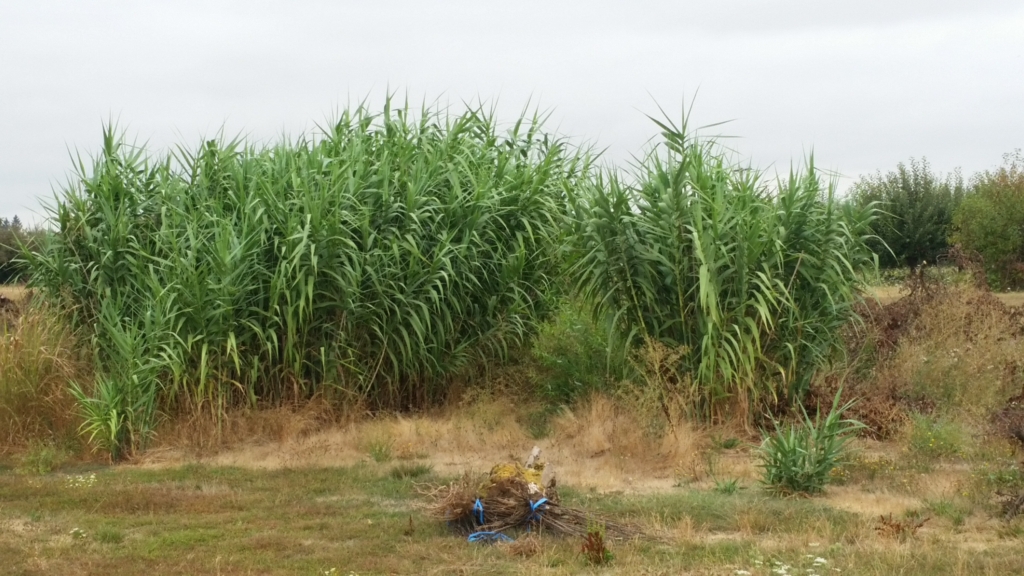Giant Reed
Arundo donax
Plant Description
Leaves: Blades mostly 1-2 feet long; 0.78-2+ inches wide. Flowers: Thick cluster of flowers, white in color, 1-2 feet long. Usually 3 flowers per spikelet. Closely overlapping, thinly sword-shaped scales with very fine points.
Plant Details
| Life Forms | |
|---|---|
| Habitats | |
| ODA Listing | |
| Soil and Moisture Conditions | |
| Suggested Actions | |
| Shade Preference | |
| Mature Height | 20' |
| Distribution | It has been widely planted and naturalised in the mild temperate, subtropical and tropical regions of both hemispheres, especially in the Mediterranean, California, the western Pacific and the Caribbean and is considered invasive in North America and Oceania. It forms dense stands on disturbed sites, sand dunes, in Wetlands and Riparian areas. |
| Control | 1. Physical Management Options: Giant reed can be cut and the rhizomes can be dug up. Physical control is difficult because it can re-establish from remaining seeds or rhizomes. Frequent mowing is sometimes effective for the control of giant reed. 2. Biological Management Options: At this time, there are no known biological controls for giant reed; although, goats are known to forage on many types of emergent vegetation. |
| Disposal Methods | Can burn piled material onsite. Canes are cut at the ground level, removed and mulched to small chips so no portion of the plant can grow back. |
| Reproduction and Spread | Giant Reed spreads vegetatively through both rhizomes and canes. Rhizomes produce new canes around the edges of clumps. Canes that end up lying on the ground can sprout new roots at each leaf intersection. Rhizomes and canes that break away during flooding events or other disturbance spread Giant Reed, typically downstream. |
| Introduced | Thought to be native to eastern Asia Date of U.S. Introduction Early 1800's Means of Introduction: Introduced for erosion control |
| Impact | Crowds out native plants species; reduces wildlife habitat; contributes to higher fire frequency and intensity; and modifies river hydrology |
| More Info |
© Marion Soil and Water Conservation District. All Rights Reserved.

